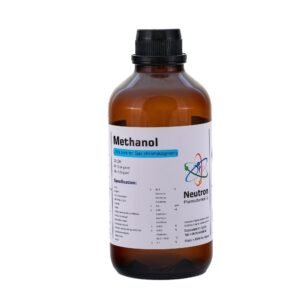Dimethylformamide (DMF) is a colorless, polar aprotic solvent with the formula HCON(CH3)2. It is miscible with water and many organic solvents. Pure DMF is odorless, but impurities like dimethylamine can cause a fishy smell. DMF is structurally similar to formamide but has two methyl groups replacing hydrogens. It is widely used in chemical reactions that involve polar mechanisms such as SN2.
🏭⚗️ production
First synthesized in 1893 by Albert Verley, DMF is now industrially produced from methyl formate and dimethylamine or by reacting dimethylamine with carbon monoxide. Newer methods involve supercritical CO2 and catalysts but are not yet practical.
DMF shows partial double bond character between carbonyl carbon and nitrogen, reflected in its IR spectrum. It is fluxional, meaning its methyl groups show separate NMR signals at room temperature but merge at higher temperatures. DMF has a low vapor pressure, is miscible with water, and has a density close to water, reducing environmental risks of stratification.
🧪 Applications
DMF is mainly used as a solvent in producing acrylic fibers, plastics, pharmaceuticals (peptide coupling), pesticides, adhesives, synthetic leathers, and coatings. It participates in important chemical reactions like Bouveault aldehyde synthesis, Vilsmeier–Haack reaction, and the Heck reaction. DMF also helps in acyl halide synthesis and causes swelling of plastics, making it useful in peptide synthesis and paint stripping. It aids in olefin recovery, solvent dye production, and safe acetylene storage. In research, DMF suspends carbon nanotubes, acts as an NMR standard, and is used in organometallic synthesis, electrospinning, and metal-organic framework synthesis. Its deuterated form is used for specific isotope labeling.
⚠️ Safety
DMF exposure can irritate skin and reduce alcohol tolerance. Due to safety concerns, DMF-containing squishy toys were banned in Denmark in 2018.




